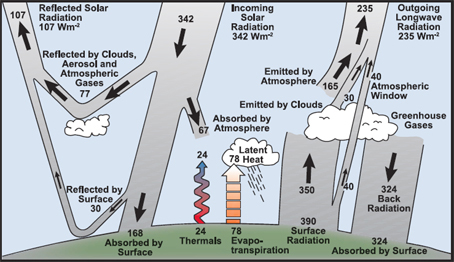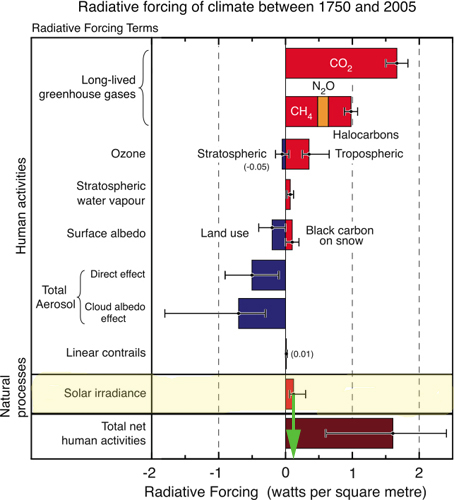
IPCC Graph
This graph depicting radiative forcing components is a simplified version of Figure SPM.2 found in the 2007 IPCC Frequently Asked Questions document.

Global Energy Budget
When the IPCC uses the term Radiative Forcing it is referring to how the energy balance of the Earth-atmosphere system is influenced when factors that affect climate are altered. This image depicting Earth's Global Energy Budget, included in the IPCC Frequently Asked Questions document, is credited to Kiehl and Trenberth (1997).


Albedo and Aerosols
About 30% of the sunlight that reaches the top of the atmosphere is reflected back to space. The ratio of reflected to incident light is also known as albedo.

Carbon Dioxide (CO2)
Carbon Dioxide is the greenhouse gas responsible for the largest forcing of the climate system.

Ozone (O3)
While ozone is important in the stratosphere, the thinning of the stratospheric ozone layer, commonly known as the "ozone hole" is NOT related to global warming. However, increases of ozone in the troposhere causes positive forcing by trapping outgoing infrared radiation and warming.
